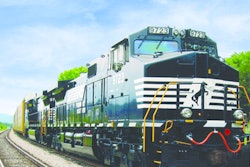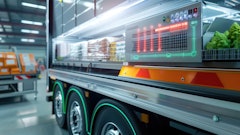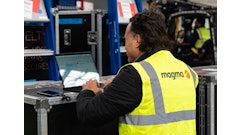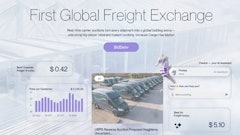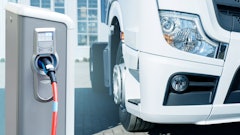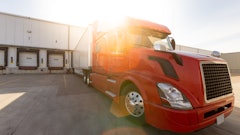
Often considered a staid — even “old school” — industry, the reality of the transportation and logistics sector today is one that has enthusiastically embraced digital transformation. In fact, Loadsmart saw more digital integrations with large shippers in Q2 2020 than all of 2019. This presents new opportunities for shippers in the food and beverage space. In recent years, companies have turned to a new generation of freight logistics partners that use advanced technologies, including artificial intelligence (AI), machine learning (ML), computer vision and more to weather a host of industry challenges and better navigate market volatility.
Sophisticated algorithms inform AI-driven solutions for risk management, driver safety, advanced driver assist systems, routing and scheduling and connecting shipper demand to carrier capacity, to name a few. Long faced with operational inefficiencies, labor shortages and siloed legacy systems, the digital transformation allows the commercial trucking industry to keep up with an emerging real-time economy and its supply chain implications. As a result, carriers and shippers alike are accelerating the pace at which they are adopting AI-driven platforms to ensure they not only survive but thrive.
Here are some practical examples on how AI is helping the food and beverage space.
- Streamlining delivery across all major transportation modes. Not all food and beverage shipments are straightforward. In fact, many require multiple modes of transportation, including trucking, flatbed trucking, rail, port drayage and transload. In the past, this may have required a multitude of contracts and communication headaches between the various shippers and brokers. Now, one-stop-shopping, or the ability for multimodal services to be embedded into digital freight streamlines the process, resulting in cost savings while reducing waste caused by suboptimal decision making. What’s more, with visibility into the entire journey of a product, decision makers in the food and beverage industry unlock more data, gaining further insights to improve logistics.
- Risk management. Supply chain risk management is a complex and oftentimes interwoven system. True risk management accounts for items within the supplier’s control (delivering quality ingredients on time), as well as things outside of their purview, like a shift in consumer demand, bad weather, shutdowns or warehousing space. AI can help identify risks ahead of time, alerting supply chain managers to a potential issue before it becomes a revenue loss. AI can also help navigate tough decisions like how much of an item should be recalled to prioritize public health without wasting good products.
- Driver safety. Many carriers arm their drivers with AI-powered safety systems that optimize fleet operation and lower risks associated with human error. Telematics solutions, combined with AI-enabled dashcams, can be useful tools for monitoring driver behavior and providing the right coaching for improved safety. These systems can also warn drivers when they’re overly distracted or exhibiting signs of fatigue. As sensor technology becomes more readily available, expect more applications like this, for example, a sensor that detects an improperly worn seat belt or driving while texting.
- Routing and scheduling. Traditionally, transportation management systems (TMS) have allowed businesses to better plan and manage the movement of goods. Going forward, expect to see a fundamental shift toward optimization, backed by greater AI. As the capabilities of TMS grow, shippers won’t just look to TMS to move freight, but to also figure out how best to move more freight for less. In previous years, TMS were only available to enterprise carriers who could afford the complex and expensive solution. This is changing, as the technology becomes more pervasive, allowing smaller shippers to adopt cloud-based, user-friendly TMS to gain efficiency and reduce internal overhead costs.
- Connecting demand with capacity. The industry experienced first-hand the inefficiencies in the supply chain caused by lack of technology. Shippers and carriers have communicated slowly, resulting in truck drivers moving partial or even empty loads while cold supply shippers were throwing out expired goods. With AI to help automate this process, connecting can take place in a matter of seconds, resulting in a win-win for both parties.
One of the biggest issues facing the trucking industry today is the inability for demand and supply to interconnect and optimize the whole market. As a result, the number of empty miles available for backhaul for all fleets increased to 28%, according to the National Private Truck Council. As the whole industry adopts technology and moves data to the cloud, expect some cost reduction, which will benefit shippers, carriers, and ultimately, the consumer.
The digital transformation in transportation helps food logistics managers streamline their efforts and ensure their supply chain remains linked, no matter what disruptions they face.





